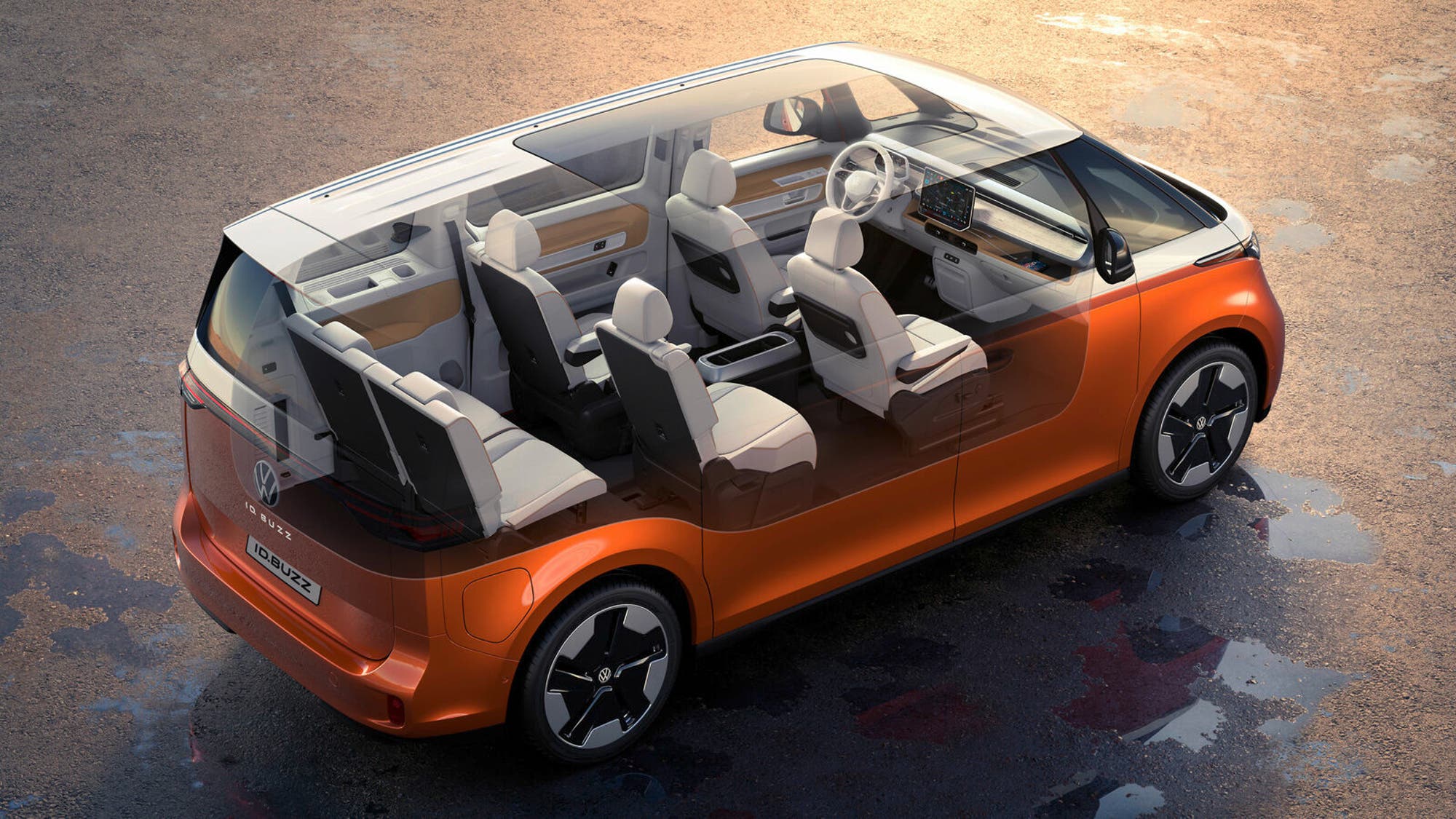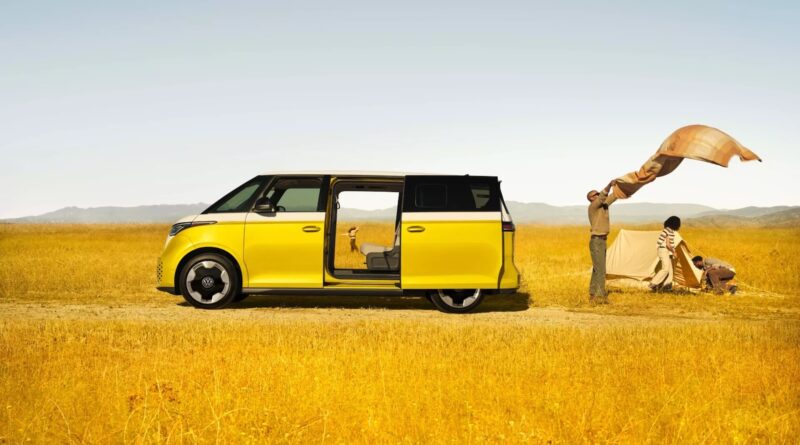Volkswagen ID. Buzz Pricing In The US — How Much Is Too Much?

Sign up for daily news updates from CleanTechnica on email. Or follow us on Google News!
Volkswagen has been teasing us with the idea of an all-electric successor to the iconic Type 2 Microbus for longer than Elon Musk has been promising a self-driving car that can drive itself from LA to NYC and park without any assistance from a human driver. Yes, that is a long time. It started with the Volkswagen Microbus Concept Car — also known as the New Microbus and the Microbus Concept — which first appeared at the 2001 North American International Auto Show in Detroit. That was way back when people actually cared about the Detroit show. Today, if you want to see the newest new things in the automotive universe, you go to the Consumer Electronics Show in Las Vegas in January. Later concepts included the Bulli in 2011, the BUDD-e in 2016, and the ID BUZZ concept that was unveiled in 2017. The ID. BUZZ went into production in 2022 and is now available in the US.
The excitement level here in the solarium at CleanTechnica global headquarters since the ID. BUZZ was revealed has been sky high. To date, we have published four thousand six hundred and twelve articles about the ID. BUZZ, each one breathlessly extolling its many virtues. (I wrote most of them myself.) Imagine a battery-electric successor to the original Microbus, one that has gazillions more oomph than the 30 horsepower original version that first came to America in the 1950s, and four times the neck-snapping power of the 1971 version with its 66 horsepower engine. The ID. BUZZ in its basic single-motor, rear-wheel-drive configuration features 200 kW (268 horsepower). The dual-motor, all-wheel-drive version has a scintillating 275 kW (369 horsepower) and can keep pace with a standard spec Tesla Model Y. Speaking of the Model Y, the ID. Buzz offers a panoramic glass roof so passengers can get a good view of the Grand Tetons as they slide by while exploring America.
Volkswagen ID. BUZZ Now Available In America
The good news is the Volkswagen ID. Buzz is now available in the United States. The bad news is that it is fairly pricey, at nearly 20 times the cost and three times the weight of a brand new 1971 Microbus. The base price for an ID. BUZZ in the US is $59,995 before destination fees, which makes it anything but “budget-friendly,” The dual-motor, all-wheel-drive version requires the buyer to check the box for the ID.Buzz Pro S Plus with 4MOTION — yes, that really is its full name — which lists for $67,995. Colors other than black or silver cost an additional $995. That lovely “smart glass roof” will set you back another $1,495. The total, before adding any of the many accessories listed on VW’s website, is $72,035.
Autoblog says the top trim level does come with quite a few features that you can’t get otherwise — although, at that price point, you might expect some of them to come as standard equipment. Along with all-wheel drive, the lucky owner gets a head-up display, a very tricky retractable trailer hitch, a 360-degree camera, and some additional storage space. The ID. BUZZ 1st Edition does offer some savings and special equipment. Single-motor, rear-wheel-drive versions start at $67,045, while the all-wheel-drive 1st Edition is priced at $71,545. It’s essentially a fully loaded vehicle that includes the smart glass roof, unique 20-inch wheels, and some different badges scattered about. It has no special paint or unique interior to distinguish it from lesser versions. There are no plaques or commemorative accessories, but it does offer many of the most desirable options for a few dollars less than the price would be if all those items were purchased separately.
Who Needs An Electric Minivan?

The ID.Buzz can brag that it is the only electric minivan for sale in the US, but does that matter all that much? The folks at Autoblog suggest that minivans represent a shrinking market segment and that there are many SUVs that are more affordable and have better performance than the ID.BUZZ. For instance, the three-row Kia EV9 starts at around the same price as the ID. BUZZ and holds the same number of passengers, while offering 70 miles more of range in the Light Long Range RWD version.
If you don’t need 7 seats, there are many offerings in the electric SUV segment that offer dramatically better value. The Tesla Model Y, for instance, has 100 miles more range and similar straight-line speed. Luxury brands like Mercedes-Benz even offer more affordable solutions, such as the Mercedes EQB, whose price for a fully optioned version is equivalent to the starting price of the ID. BUZZ. The Rivian R1S and Tesla Model X cost nearly the same as the top spec ID. BUZZ.
True, there is no direct competitor for the ID. BUZZ, and if you are only shopping for a fully electric minivan and nothing else, the Volkswagen is pretty much the only choice in the market presently. But choosing to buy one is an emotional decision based on looks and lifestyle. While there is nothing wrong with that, it may have been an easier ask if the van’s pricing was at least remotely enticing. The original Type 2 Microbus was a success thanks to its relative simplicity, affordability, and space. The new one appears to be resting on the company’s past laurels.
No EV Incentive
One major stumbling block for the ID. BUZZ in the marketplace is that it does not qualify for the US federal tax credit because it is built at Volkswagen’s Commercial Vehicle assembly plant in Hannover, Germany. Whether Volkswagen Credit will offset that dilemma in some way because of exceptions the Treasury Department created to implement the Inflation Reduction Act for leased vehicles is a conversation customers will want to have with a finance specialist at their local Volkswagen dealer.
Over the past several years, many of us have been waxing nostalgic about how cool it will be to once again drive the Pacific Coast Highway from Carmel down to Big Sur in a battery-powered Volkswagen van, toking on a number while Crosby, Stills and Nash sing “By the time we got to Woodstock, we were half a million strong…” on the stereo. Flashbacks are wonderful things, but whether they have the power to overcome our reluctance to overpay for them remains to be seen. Now where did I put my collection of tie-dye T-shirts?

Chip in a few dollars a month to help support independent cleantech coverage that helps to accelerate the cleantech revolution!
Have a tip for CleanTechnica? Want to advertise? Want to suggest a guest for our CleanTech Talk podcast? Contact us here.
Sign up for our daily newsletter for 15 new cleantech stories a day. Or sign up for our weekly one if daily is too frequent.
CleanTechnica uses affiliate links. See our policy here.
CleanTechnica's Comment Policy

